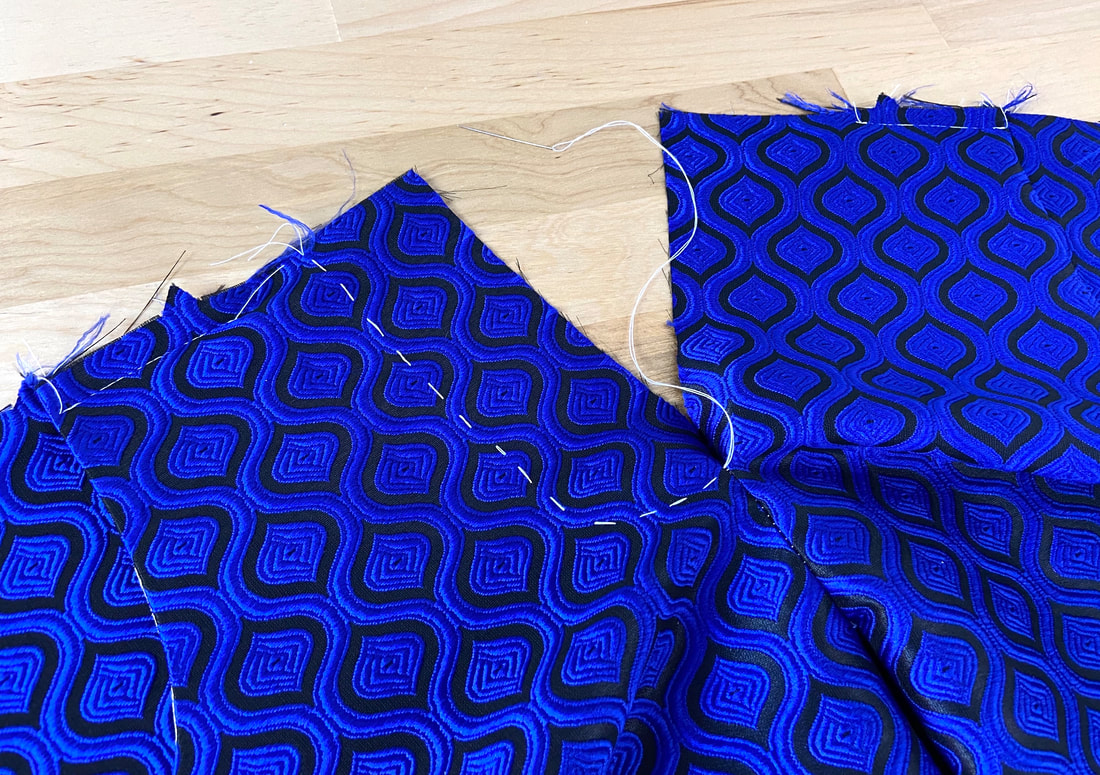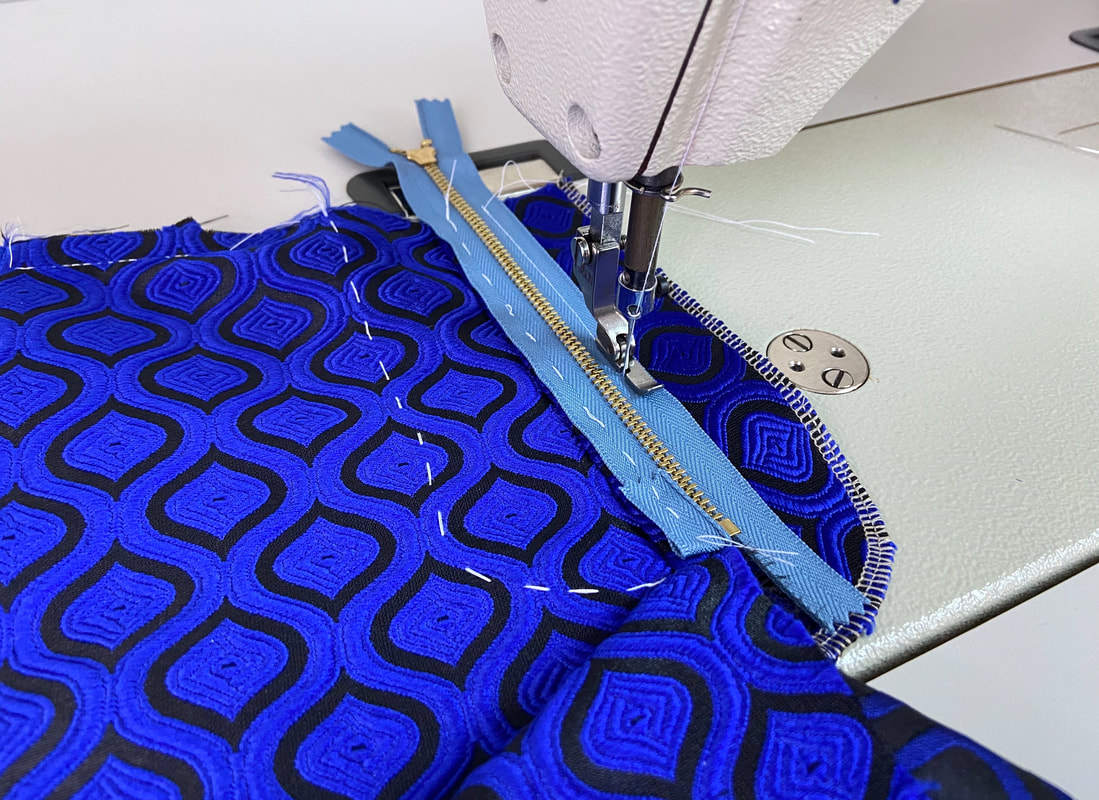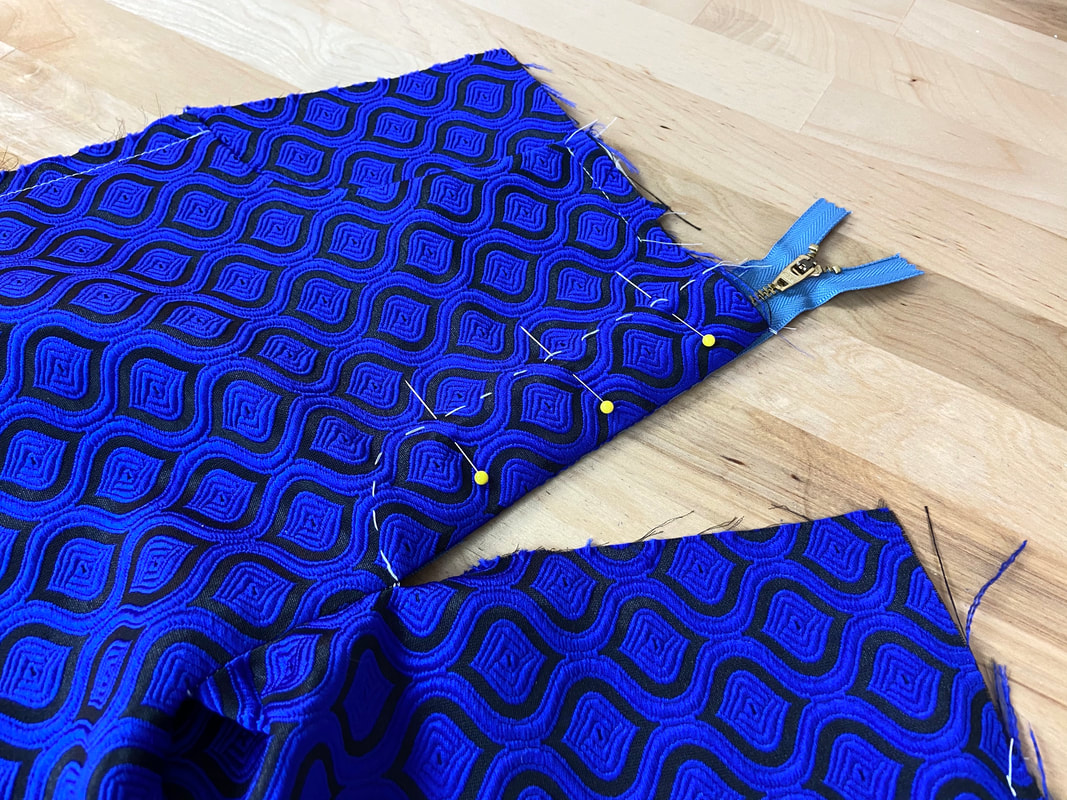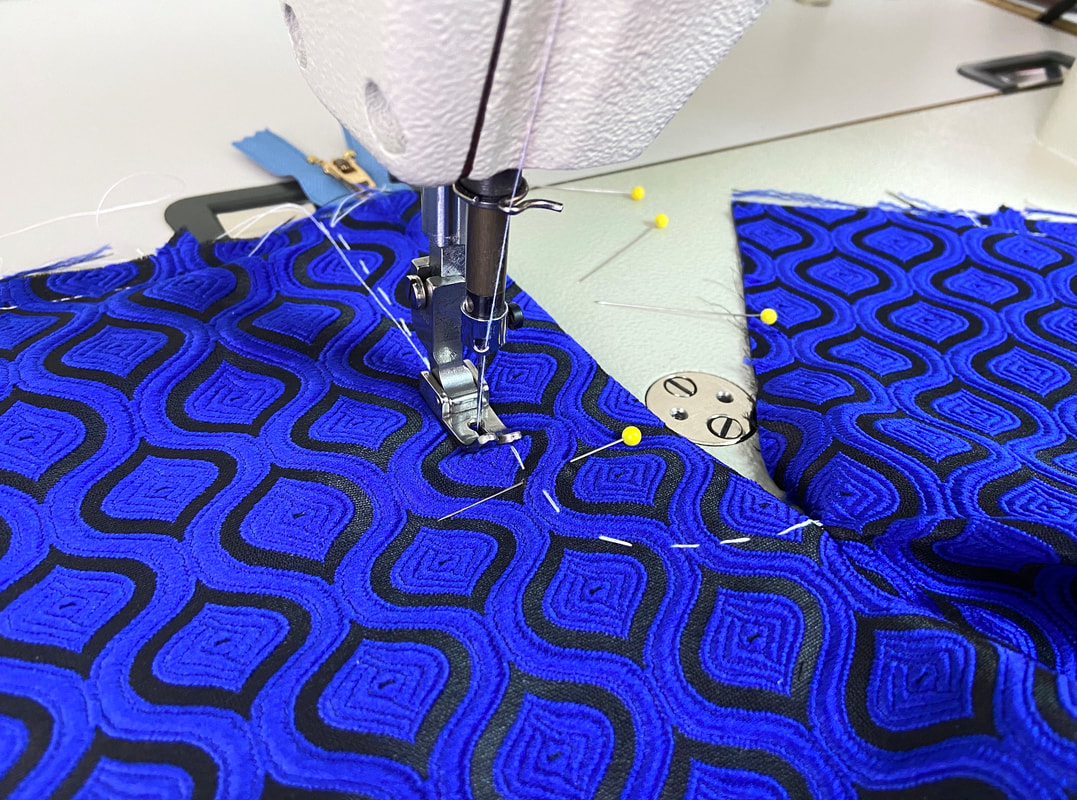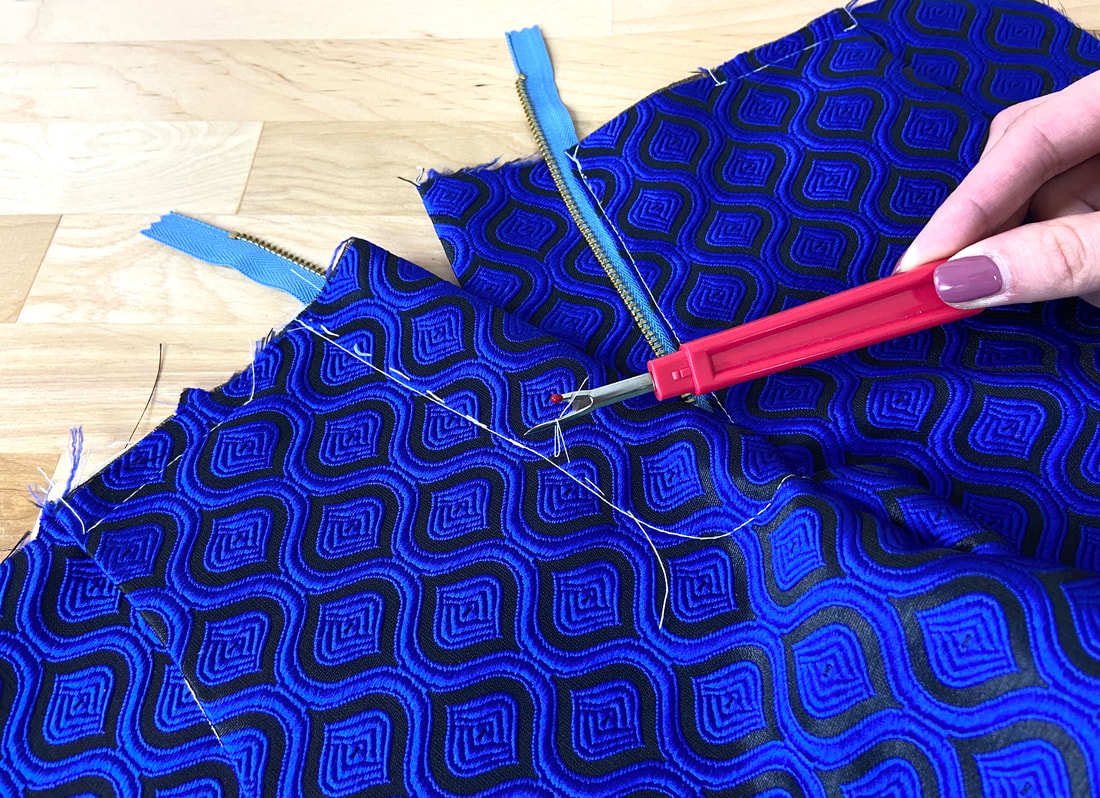How To Easily Mark And Topstitch A Fly Zipper Placket
Sewing Tip: When completing a fly-front zipper application, mark the curved placket line with hand basting prior to attaching the zipper and all its remaining components. Applying this stitching guideline prior to beginning the zipper insertion process will not only allow for more precision, it will also provide increased comfort when marking the placket line.
The hand basting line should only be marked through the top garment layer on the side that will house the fly placket in the final application. This line does not serve any other purpose but to provide a stitching guide later on in the sewing process.
The hand basting line should only be marked through the top garment layer on the side that will house the fly placket in the final application. This line does not serve any other purpose but to provide a stitching guide later on in the sewing process.
Once the desired placket line is marked with basting you can proceed with attaching the facing (to the same edge as the marked placket), and aligning and stitching the zipper to the facing layer as needed in the fly zipper application. The hand basted placket lines can be ignored during this process.
When the facing and the zipper (which is attached to the facing layer) is flipped to the wrong side of the placket, the pre-marked hand basted lines will provide the perfect topstitching guideline. All you have to do now is secure the layers with pins to keep them smooth and flat during the stitching process to follow.
Starting at the top and moving towards the curved bottom, topstitch next to the marked hand basting following it carefully for an even application. This topstitch is only applied through the garment and facing layer - it does not have to catch the zipper tape underneath. Remember, the zipper tape was already attached to the facing layer separately in the previous step.
The importance of stitching right next to the hand basting and not directly on top of it comes into play when the temporary hand basted threads are removed. Hand basting that is caught within the machine stitch is more difficult to remove. Conversely, hand basting that has not been accidentally or intentionally machine stitched can be removed in seconds using a seam ripper.

